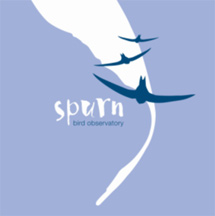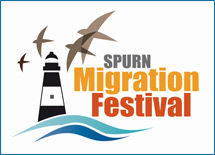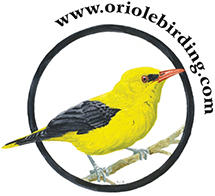Weekly round-up: 15 - 21 May 2013
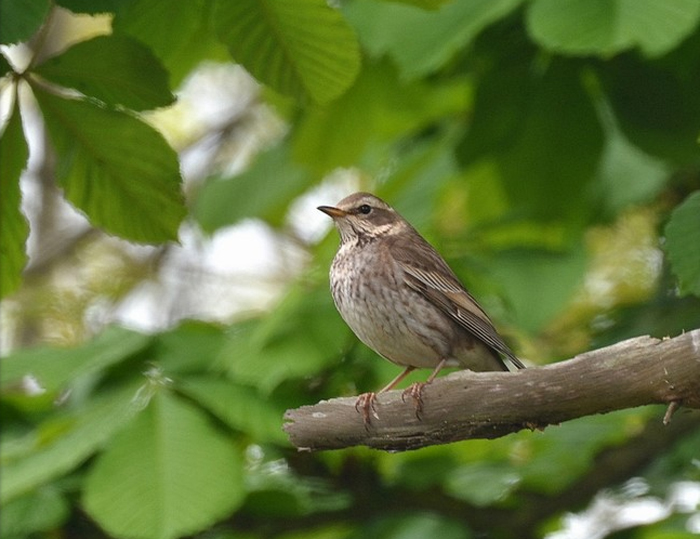
BOOM! Spring has well and truly landed this week and, some would say, about time too.
After a tantalising improvement in all things rare in the last fortnight or so, this week it all went a little bit crazy, thanks (primarily) to just one bird which, as the song says, “it's been a long time coming”….
…and as is often the way, no one saw the events of the weekend coming ~ there was no suggestion at all that one of the ultimate blockers on the British List was going to topple and the weather, at the time although looking ok, arguably, was not much better than that.
Indeed, the start of the week had seen snow fall over the moors of west Devon and the winds were generally cold and uninviting and from the north or northwest. A whole heap of damp grot sat itself across a lot of the North Sea and the frantic weekend that followed ~ with the doors being flung wide open as classic May fall-out birds dropped themselves willy-nilly from Shetland to Kent ~ really didn’t appear to be on the cards as Friday morning dawned.
But come they did and, given the oft rare-bereft doldrums we’d been bobbing around in for much of the past six weeks, it was a scintillating surprise and nothing was more off-the-wall and unpredicted as the bird that found its way to the southeast and, eventually, on to hundreds of lists too….
“Well I've been working hard to reach me target To earn a few bob for a day trip down to Margate”
Chas & Dave knew a thing or two after all then as a merry procession of anxious, keen and ultimately satisfied (for the time being…) spent their cash and headed to the Kentish seaside town for a Saturday morning rendezvous with an oft-predicted, much longed-for species that only came to light after the late, late Mega Alert from the previous night. The bird in question generated the most intense mainland excitement for what seems like an age….
This spring has, until now, not always been the most enlivening of affairs but the clarion call of a Dusky Thrush was utterly unmissable for the 100’s and 100’s of folk who headed to Margate throughout the day of May 18th.
The story is well known ~ local birder Steve Tomlinson had had odd glimpses of a thrush in the cemetery on the edge of the town, on both 15th and 16th. The views weren’t had for long and Redwing was thought of as being the most likely answer to the identity of the elusive hide & seek visitor.
Then, during the day of 17th, Steve went back again and this time, bingo! The bird was in the open for around 20 minutes and he managed to rattle off a number of images. With the outrageous thought that female Dusky Thrush was a very real option but, bearing in mind the potential for variation within the species and also the dreaded spectre of Naumann’s Thrush intergrades, Steve held off putting out news until the photos had been circulated to a wider audience.
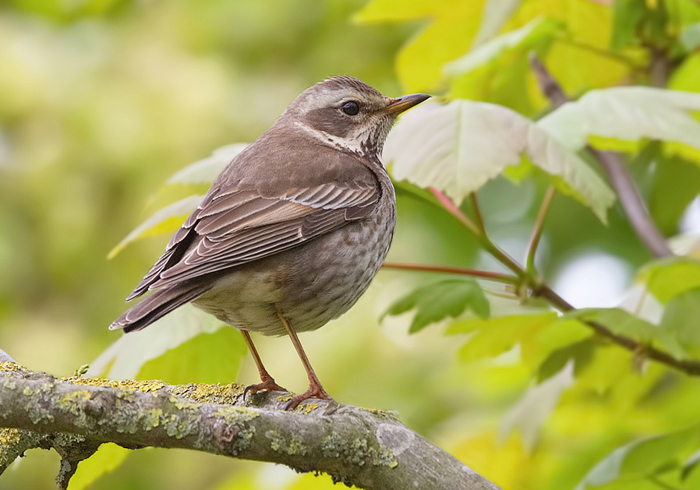
…and that wider audience rapidly proclaimed Dusky Thrush! News was broadcast half an hour or so before midnight, catching many sleeping birders out ~ imagine their surprise the next morning ~ but a number had been wide awake and a dawn gathering was on hand to confirm that the bird was still there and yes, it was a female Dusky Thrush, long before some of those slumbering birders where even out of their beds.
An orderly crowd made it a very busy day for the permanently slumbering residents within this super area ~ easily turning over a four figure number of birders through the day. The bird behaved itself too, showing well for much of the time and, being so obliging, it meant that much detailed scrutiny of all its bits and bobs was had by all and, with a wealth of excellent images to go with it, it wasn’t really too much of a surprise when the debate opened up as to exactly when is a Dusky Thrush not a Dusky Thrush…
The intergrade issue is one that goes hand-in-hand with any claim of either Dusky Thrush or Naumann’s Thrush in Britain (or the Western Palearctic as whole) and particularly when a bird appears as plain as this. Both species are, of course, gross mega rarities here ( 9 to 2 the current score) and the analytical approach that snowballed fast with regard to the Margate Turdus could perhaps trundle on for a good while yet.
As Saturday concluded and Sunday dawned, there was a school of thought that questioned whether the Margate Dusky Thrush was a 100% pure first-summer female Dusky Thrush. The hint of rufous in the flanks and breast was perhaps a little more obvious than was expected for a Dusky Thrush and the lack of significant amounts of rusty tones on the closed wing also raised an eyebrow or three. The slightly pallid upperpart tones was questioned too by some, while it was rumoured that others weren’t happy with the look of the tail (although it was countered that actually the tail was a decent fit for a Dusky Thrush, the newly grown adult feathers comfortably matching what you’d see on the real deal).
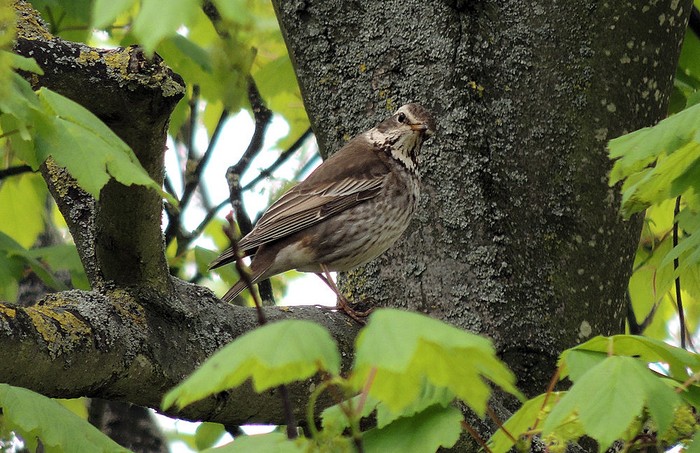
So. Were all those who ventured to the north Kent coast eventually be vanquished in their quest to add this beautiful species to their British lists? A brief perusal of some online images of presumed intergrades didn’t yield any images of a bird that looked precisely like the Margate individual (nor where there matches for another potential pairing of Dusky X Black-throated Thrush). Arguably though, early online trawls made slightly heavy weather of finding an exact fit (within pure Dusky Thrush) for the Kentish vagrant too.
But…it definitely seemed to be closest to Dusky Thrush and the harder you searched, the more images cropped up that got closer to the appearance of the Margate bird and they were all labelled as Dusky Thrush. Even one or two Euro-vagrants bore more than a passing resemblance to Kent’s popular day-tripper draw.
For those who couldn’t get away during the Saturday, Sunday morning brought dismal news. The bird was gone and those people must hold on to the chance of the BBRC wielding an unfavourable axe over the Thrush’s head ~ for those hundreds who did make it, well they (we!) will all be hoping/assuming that it is just a case of both the age and sex of this bird being little known, in terms of variability across the range of the species, tho’ the same argument may be proffered by those who remain in Intergrade Corner (a diminishing number it has to be said).More will follow over the next few days for sure, but if the bird is accepted as a genuine, full-on Dusky Thrush, it will become only tenth record of this Far Eastern vagrant in Britain and the second within just over three years. And with a significant post from Lars Svensson making it to the online forums on Sunday afternoon, it seems as though the case for the defence has taken on something of a cast iron nature…
“This is a first-summer female Dusky. No sign of mix with Naumann's or Black-throated. It is about the plainest and greyest immature female Dusky one could find, still is OK for that and not atypical at all. Naumann's has more rufous on upperparts, which would have shown, and more obvious rufous on breast and flanks, too.”
What route could the Margate bird have taken to get here? It is a massive guessing game and Andy Stoddart has taken a look at the charts from the days leading up to the Kentish touchdown
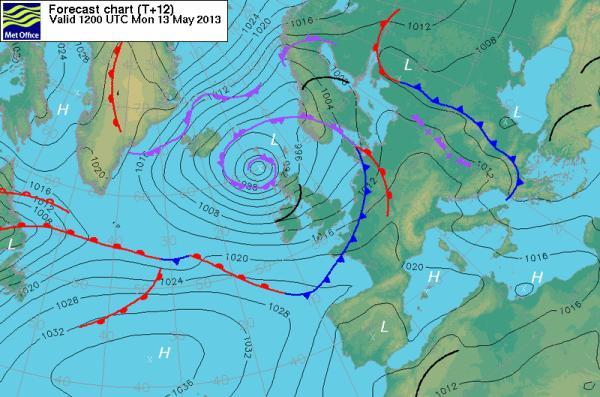
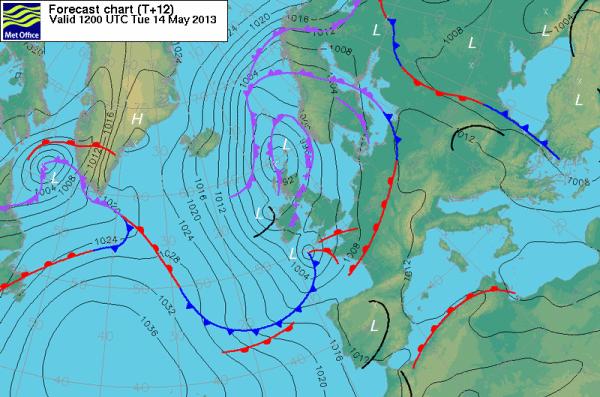
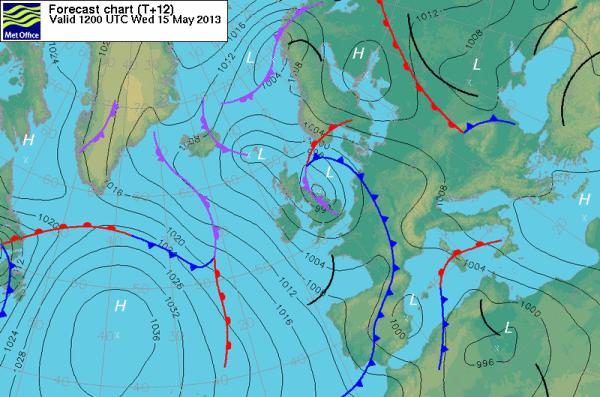
"Working out the route which the Dusky Thrush took to Kent is near-impossible as, unlike with many vagrants, we don’t know where it had come from. It is tempting to speculate that it was northbound from a wintering site somewhere to the south or southwest of Britain and this would certainly tie in with the prevailing weather conditions. If Wednesday 15th was indeed its arrival day (and even this is a supposition) then the windflow the night before was drawing in air from the southwest ahead of a weak low approaching Cornwall. Before this, the windflow had been from Ireland and the mid-North Atlantic for several days - a most unlikely source-area for this bird" ~ Andy Stoddart.
The stunning male in Leigh, near Wigan (Greater Manchester) in December 2010 caused major ripples in the rarity pond, long gone after the gripping photos came to light and that bird was the first sniff of the species in 23 years, following on from a three day bird (also in December) on Skomer in 1987.
A brief bird at Bude (Cornwall) in November 1983 wasn’t known about at the time, while the West Midlands bird (a 35 day stay near Shirley in February and March 1979) only came to light when the lady who’s garden the bird visited from time to time managed to get a snap of the thing on the garden fence which, eventually found its way to the then chair of the BBRC.
Before the ’79 bird, Shetland had scored three-in-a-row ~ on the Mainland for a week in November 1975 (this bird has the suspicion of intergrade hanging over it too), on Whalsay in September 1968 and for four-days on Fair Isle in October 1961.
The Margate and Leigh birds aside, the most famous Dusky Thrush to date was the twitched, wintering bird in Hartlepool from December 1959 to February 1960 ~ a 75 day stay from an unequivocal first-winter male.
…and one of the few people to have ventured to the northeast back then was long-time listing legend Ron Johns, and he has kindly taken the time to dig back into his notebook from the time and recounts the following….
”Although the bird at Hartlepool was found on December 12th 1959 and trapped on January 10th, it wasn’t until the end of the first week of February 1960 that I was informed of the bird’s presence, thanks to a letter sent to me from northeast based birdwatcher Alan Vittery”.
”Alan’s letter was enough to spur me and my birdwatching friend Martin Coath to journey to Hartlepool the following weekend ~ the first twitch I’d undertaken by my own means ~ and we spent 49 shillings each to take the midnight train from King’s Cross ~ travelling on news that the bird had been seen earlier in the week but with nothing more up to date than that”.
”On arrival, we were met by Alan and his brother and, after a hearty breakfast we headed to a school playing field in Hartlepool, on a cold Saturday February 13th, to enjoy views of the first-winter male Dusky Thrush, often in the company of a group of Redwings”.
”We watched the bird for an hour or so, in a brisk ENE wind (a Force 5) with occasional snow flurries, before departing to the local seawatching hide where I collected my second new bird for the day ~ Little Auk! Martin managed to miss the bird, due to an explosion of soup from his flask which promptly filled his binoculars, just as the Little Auk came in to view”.
“The successful journey ~ not undertaken by any other birdwatchers from the south of England as I understand it ~ was concluded via a bus trip towards Middlesbrough station in which we drove past Hartlepool’s United ground as they played Stockport County. Our brief stop by the ground was long enough to see the home side concede a goal….they were to finish bottom of the old Fourth Division that season….” ~ Ron Johns
The Hartlepool bird was Britain’s second-ever Dusky Thrush, the first was an ancient record, shot in Nottinghamshire in October 1903.
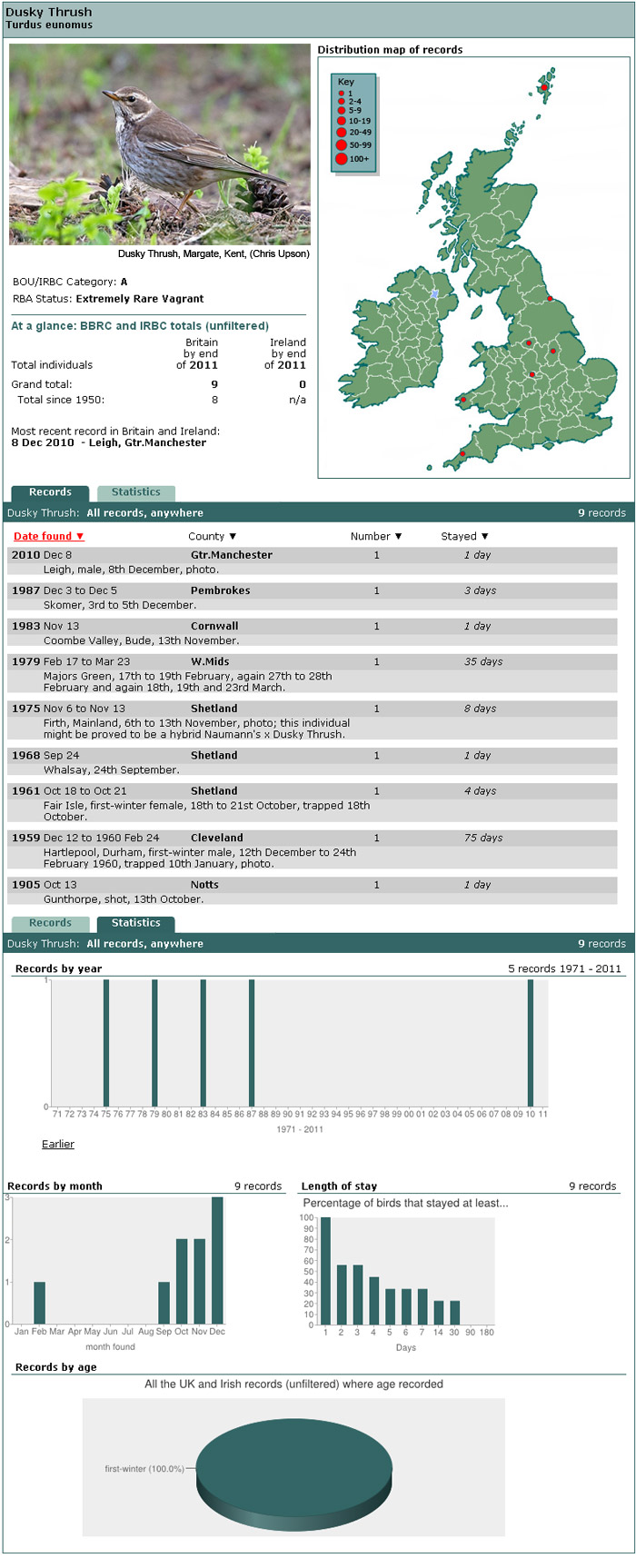
Funnily enough, as I left the cemetery in Margate around 11am on Saturday, the man who popped up in front of me, to peer down a nearby ‘scope to collect his first Kentish Dusky Thrush and his second in Britain (how many people have seen two here?) was a devilishly youthful-looking Martin Coath, complete with trademark brown woolly hat….
This week’s bird becomes the first spring Dusky Thrush for Britain (the other nine arriving between September and February) but there are spring records of other mega Eastern thrushes. As was mentioned here last week, there have been four spring (April to June) records of White’s Thrush while there have been three Eye-browed Thrush records (including two in the spring of 1981) and seven Black-throated Thrushes, six in April, one in May and all since 1995.
The story of the Kent bird may still run a little longer, but as Sunday faded to a new Monday, it looked as though pretty much everyone, even those early worried souls, seemed to have had minds collectively put at rest thanks, in no small part it seems, to the soothing words of Svensson.
Next stop the checklist to ink in a monster rare…!
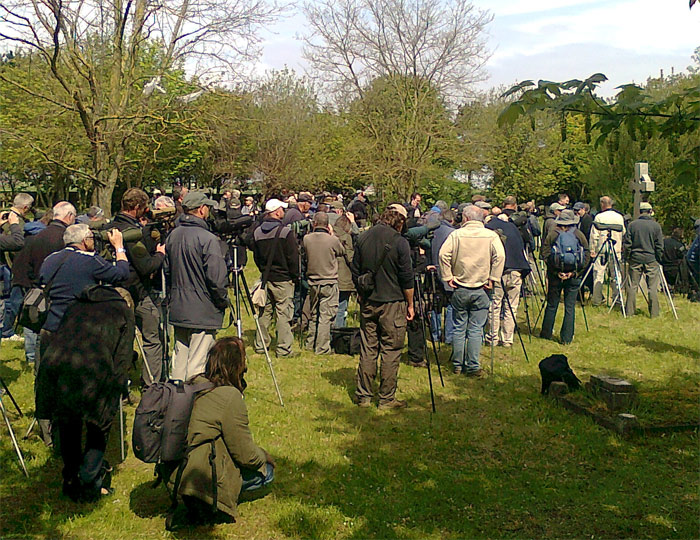
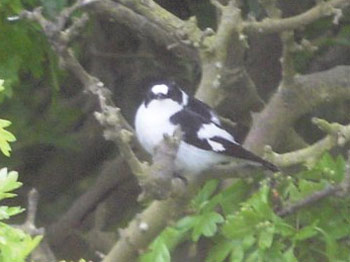
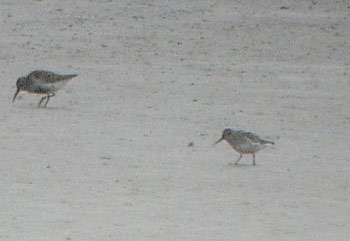
Back to Margate and for many birders of a certain age, that’ll be us 40-somethings (or older), there is one bird that the town’s cemeteries are remembered for ~ the spring male Collared Flycatcher of May 1984. That bird was a particularly tricky beast to get hold off on occasion, flitting across the tops of what seemed to be the tallest trees known to man, but this week that very same species made its third appearance within 10 days, at Spurn (East Yorkshire) late in the day of a busy, busy 18th.
A stunning looking adult male, it was found by John Grist (who enjoyed something of a red-letter rare day, having found a Broad-billed Sandpiper earlier the same day…) and becomes the first (non-contentious) record of the species for Spurn (after the much discussed first-winter bird there at the end of August 2010). This week’s bird becomes the second for Yorkshire as a whole ~ the only other one was seen at Filey in 1985, which some questioned why it had so much white in the tail...
As was mentioned in last week’s review, this is a species on the up in Britain at the moment ~ the Spurn bird takes the total number of known Collared Flycatchers here since 2002 to 15, meaning that well over a third of all records have occurred within just the last 11 years.
This becomes the third year in the last five to have recorded three of these most handsome birds in the same year (following on from 2009 and 2011) and, with decent weather and at least another three weeks before spring is consigned to the bin, there’s every chance that 2013 could nip in with a record-breaking fourth bird.
One of last week’s two males, the superb bird on Whalsay (Shetland) remained until the evening of 16th.
Staying on Shetland, we come to what has to be a plumage-first for Britain, in the shape of a near fully summer-dressed adult Pacific Diver found by one-time Fair Isle warden and Shetland birding machine Paul Harvey off the coast of south Mainland, at Grutness, on 16th.
Present for just one evening, the bird was well documented by Roger Riddington and those images seem to be overwhelmingly conclusive in the pacifica stakes ~ a spiky-looking, rather small bill with a head shape that looks bang on for the far-flung traveller. Add in to that the lack of obvious thigh-patch and even, black rim around the dark flanks ~ well it surely takes us into new and exciting territory….
Here’s Roger’s account of this cracking find....
”At about 7.30 pm on Thursday 16th May, I was almost back at the car after a particularly unproductive couple of hours of after-work birding at Quendale and my thoughts were firmly fixed on supper. A text from Paul Harvey, who was covering nearby Sumburgh, reported ‘a stunning, sum plum Black-throated Diver’ in Grutness voe. That was just about enough reason to delay food; Black-throated Diver is a decent bird in Shetland (typically, you might expect to see one a year, and most of them wouldn’t be in summer plumage).
Less than five minutes later, I was in the car, and had stopped to check a few hirundines over Hillwell. No Crag Martin (again) and my phone rang; it was Paul. Before he could speak, I said ‘so it’s a Pacific is it?’, fully expecting a derision-filled response. I can’t remember exactly what his reply was but the tone was pensive rather than derisive. He had left his scope in his car and was looking at the bird through bins only; but there was no white thigh patch that he could see and it was clearly niggling him.
At Grutness, I had a quick look at the bird, which was a long way away at that point and into the sun. I couldn’t see a thigh patch either but at that stage my adrenalin wasn’t running. We clearly needed two scopes though, so I drove Paul back to his car. Back at the voe, we concentrated on the bird in earnest. I drove to the north side, with the sun behind me; he was on the south side, a little closer to the bird. After a couple of minutes viewing I was really struck by what seemed to be a distinctly unremarkable, if not downright petite bill. The differences in structure (bill and head shape) and the lack of a thigh patch were the only things I could remember about a sum plum Pacific, and this bird seemed to have both! I also remembered that there was a lot of overlap, that there had never been a summer-plumaged one accepted in Britain, and that any claim was a big call.
From that point on, I spent most of my time trying to photograph it. It wasn’t so easy, with the scope at x60 and the camera zoomed in to max, but I knew that any coherent claim would need photographic support. Over a ten-minute period, I rattled off 39 pics, most of them pretty grim. The last one, at 20.11, was taken less than a minute before the bird roused itself out of the water and flew off strongly, some 15 minutes after we’d started to look at it properly.
I drove round to the where Paul was parked, and we discussed the bird – Paul thought the structure, lack of thigh patch and pale nape were all promising – and replayed the images. The emotions were a curious mixture of panic, elation, frustration – and no small concern that it had well and truly fecked off, and we hadn’t got anyone else there. The inevitable soul-searching as to whether we should have put some sort of half-baked news out quicker mingled with the general feeling of ‘so what do we do now?!’
In the end, we went back to my house, downloaded the pics, and pulled out all the reference material we could find, together with a couple of glasses and a bottle of malt. Half an hour later, it still looked good. The bill looked distinctively small billed in almost every shot that wasn’t hopelessly blurred, and there was no obvious anterior thigh patch on any shot. Three or four pics showed a small intrusion of white along the flank, but it was further forward than a typical Black-throat thigh patch. We cobbled together a couple of e-mails, phoned a friend, and released five of the better pics to the world on Martin Garner’s Birding Frontiers blog.
At the time of writing, we’re still waiting for one or two responses and still trying to extract the maximum from those grainy disgiscoped shots, so in a sense you can make your own mind up. It’s a good candidate though…” ~ Roger Riddington
If this exceptional looking bird is accepted (which, surely, it will) it will become a Shetland (and Scottish) first and also the first summer adult for Britain and Ireland too. It may also offer the first real clue as to where our vagrant Pacific Divers travel through as they head north. How far they go and whether any have “hooked up” with a Black-throated Diver is, of course, unknown, but one day, some intrepid soul may just chance upon one of these on a tundra pool in the Arctic North.
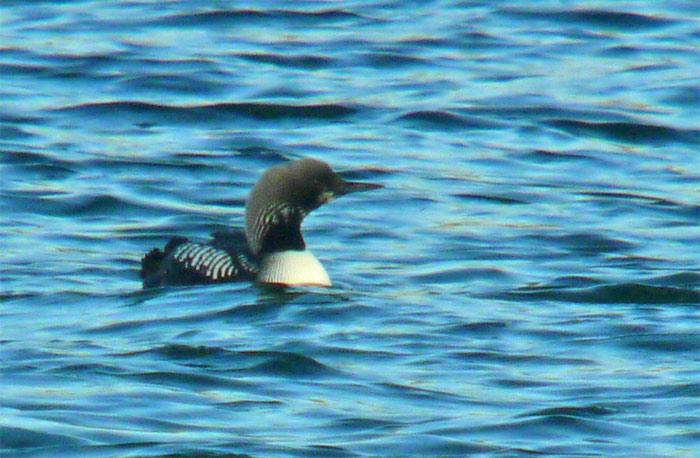
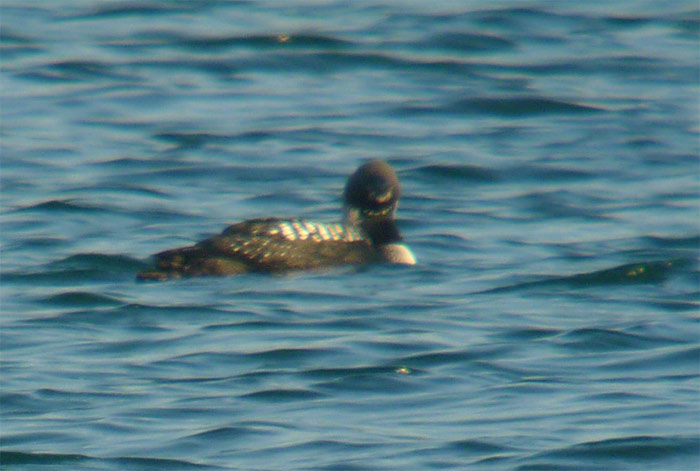
With all this excitement, things like Pallid Harrier almost slip by unnoticed these days but the presumed adult female seen for 10 minutes in and over Cley (Norfolk) on the morning of 16th was certainly worthy of a nod (mainly as it as seen by me!). Initially seen being mobbed by local corvids over fields at the south end of the village, the bird quickly headed north and then took a swift left turn and started drifting west over the middle of the village itself.
Here it spent 10 minutes or so circling up, higher and higher (and showing off a rather telling Pallid-like underwing pattern for starters) before eventually going well up in to the clouds and then getting a shimmy-on as it tore over Blakeney Point. This could become only the second adult female to be seen in Britain, following on from the well-watched female in South Yorkshire in October 2010.
After a great week last week, the last seven days saw a drop in the number of passage Long-tailed Skuas but with a decent bit of seawatching weather coming in towards the end of the review period, things started to pick up once again…
A total of 209 were seen from Aird an Runair, on the Balranald RSPB reserve on North Uist on 20th, with 51 recorded on South Uist, off Ardvule, the same day. A flock of some 40 birds must have been a glorious sight as they headed over Loch Assapol, Mull (Argyll) the same day and the 20th also saw 27 Long-tails head inland at Saltcoats (Ayrshire) in just over an hour from 6.30pm. Elsewhere a single bird was seen off the Wexford coast and two adults headed over Sumburgh Head on the Shetland mainland.
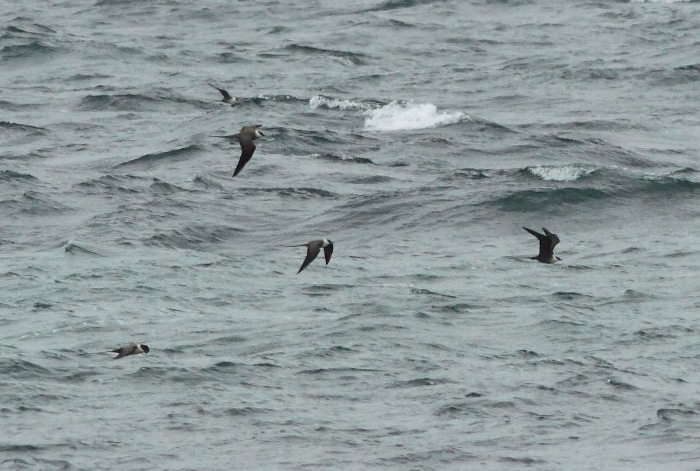
The 21st proved to be another good day for Long-tailed Skuas with 68 off Wats Ness on Mainland Shetland, and a flock of at least 35 were seen over Belmont on Unst. Saltcoats got a few more (21 there) and then 102 were seen off Breanish, Lewis (Outer Hebrides) in two mid-afternoon hours, with 147 off Mangersta Head, also on Lewis, the same day. More were noted around the Highlands and islands through the day (including 40 past Balranald), which ended with around 390 on the overall scorecard.
Prior to 20th, just over 30 birds were noted ~ including 22 off Saltcoats on 15th, with three each for Bowness-on-Solway (Cumbria) and Annagh Head, on the Mullet (Co. Mayo), while three birds were seen on Orkney on 18th, including two adults over South Ronaldsay, while two more were seen off South Stack RSPB (Anglesey) on 19th.
The big numbers of Pomarine Skuas from last week couldn’t be repeated this week but few would complain if they saw 110 in a day, which was the score from Aird an Runair on 20th. A further 100 or so were recorded, from 14 counties through the week (with six of those on the east coast and 13 off Wats Ness on 21st) with 37 from Saltcoats on 15th the next best score after the Balranald tally.

Birders seawatching at Saltcoats also recorded a Leach’s Storm-petrel on 15th (the only one of the week) while a first-summer Sabine’s Gull over Kelling Hard (Norfolk) was much more of a surprise on the afternoon of 20th.
Back on the Outer Hebrides, a White-billed Diver flew past Aird an Runair on 20th (when two were seen there one May, some 25 years ago or so, it was thought to be the stuff of an over-active imagination…we all know differently now) and a probable was off Inishbofin (Co. Galway) on 18th, firming up on 21st.
Finally in this week’s Seabird Parade, a single Balearic Shearwater, seen from Splash Point, Seaford (East Sussex) on 18th and a Little Auk was reported from Cruden Bay (Aberdeenshire) on 21st.
A Black Stork spent a couple of days at large in Hampshire across the weekend of 18th-19th, seen heading over Acres Down on the former date and appearing at Oxenbourne Down on the latter. A probable was also noted again in Somerset, this time over Woolavington, also on 18th.
Following a report of two White Storks (of unknown origin) near Shottisham (Suffolk) on 18th, one seen in the northwest of England was presumed to be an escape ~ seen in Cheshire on 18th-19th before drifting over Rochdale (Greater Manchester) later on in the day on 19th, while the origins of the bird over Dorman’s Pool (Cleveland) on 21st are also unknown.
In Norfolk, an immature Night Heron was reported after dusk on a murky 20th at Cley, heading over the village before landing near the windmill, while four new Purple Herons made appearances at Arcot Ponds (Northumberland) on 16th, at Marazion Marsh RSPB (Cornwall) on 19th-20th, at Castlemartin Corse (Pembrokeshire) and Brading Marshes (Isle of Wight) on 20th.
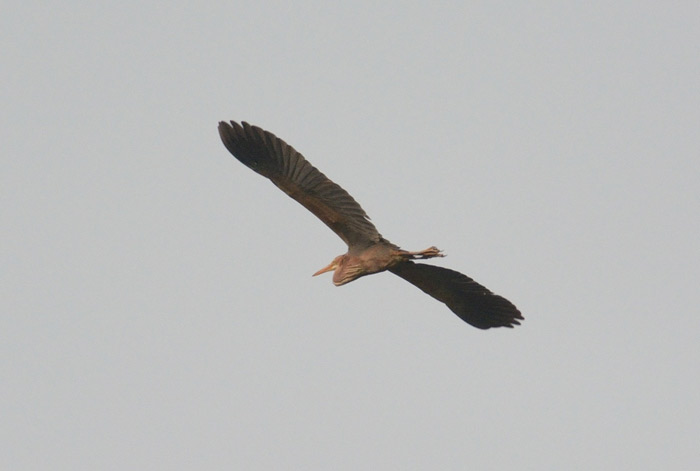
The week’s total of 14 Great White Egrets included three at Ham Wall RSPB (Somerset) on 18th (along with over 50 Hobbies) while one or two birds were seen in Aberdeenshire, still at Loch of Strathbeg RSPB on 15th-19th and on 21st, with it or another dropping in on the Ythan Estuary on 20th.
The bird at Coombe Hill Meadows (Gloucestershire) was present to 17th at least, while further into southwest England one was seen at Marsh Barton, Exeter (Devon) on 16th. Elsewhere, a Great White Egret was still in Northumberland (at Holywell Pond and Druridge Bay) on 16th-17th, over Rainham Marshes (London) on 17th, again in Staffordshire on 19th, at South Ockendon (Essex) on 20th and Gibraltar Point NNR (Lincolnshire) and Sammy’s Point and Kilnsea (East Yorkshire) on 21st. Two birds were also seen in Kent ~ at Dungeness on 17th and Grove Ferry on 19th.
Kent also hosted as many as three different Cattle Egrets this week. The first was found at Northward Hill RSPB on the morning of 18th, with another some six miles away, still at Shorne Marshes RSPB on the same day (that one proving particularly popular as a post-Thrush padder). In Ireland, the long-staying bird at Hillsborough Park Lake, in County Down, was present for another week.
The following day, the Northward Hill individual was still present and on 20th one was found at Dungeness. Meanwhile on Anglesey, at Llanfachraeth, the Cattle Egret remained there to 15th.
In Wales, at Marloes Mere in Pembrokeshire, the second-summer Glossy Ibis was seen to 19th at least while a Spoonbill headed out to sea from the same site on 19th before heading over both Skomer and Skokholm. A further 40 or so Spoonbills were noted elsewhere during the week, though exact numbers (especially in East Anglia) were hard to calculate.
As many as 17 birds were seen at five sites in Suffolk, including eight at Walberswick on 17th-18th and six at Minsmere RSPB on 21st, while 14 or so were seen at six sites around Norfolk, including four at Berney Marshes RSPB at the start of the week. Another four were seen at Wicken Fen NT (Cambridgeshire) on 15th-16th, up to three singles were in Lincolnshire and one was seen at two sites in South Yorkshire on 19th-20th.
Two Common Cranes were at Lakenheath RSPB (Suffolk) throughout the week, while an unringed bird was noted on Catcott Lows NR (Somerset) on 18th (following on from six over Portishead, near Bristol on 16th). Two Cranes spent an hour or so at Blithfield Reservoir (Staffordshire) on 19th and in Highland, one was near Carrbridge on 21st.
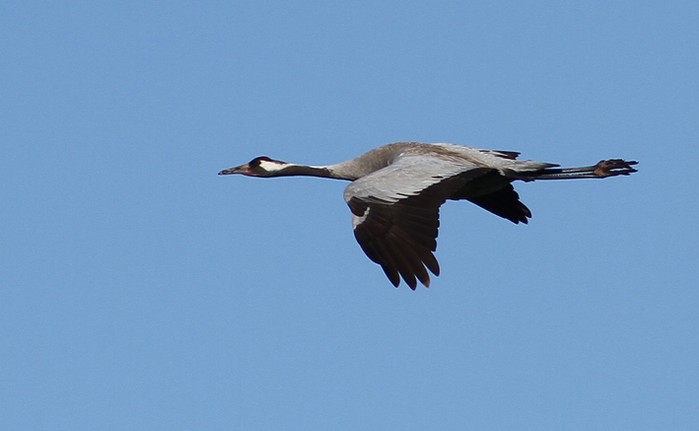
On North Uist, at Loch a’Roe, Aird an Runair, a ”Small” Canada Goose appeared on 16th and was still present to 20th at least (a great looking bird, it is an interesting one to try and work out to specific/sub-specific form ~ somewhere in the parvipes camp perhaps?).
Three drake Lesser Scaups were seen during the last seven days, all of them familiar birds to regular readers of the review.
The bird at Saltholme Pools (Cleveland) was present to 16th, while in Highland, the St. John’s Loch male was seen between 18th-21st and in West Yorkshire, the Lesser Scaup reappeared at Anglers CP on 21st, after 11 days spent somewhere else.
In East Yorkshire, the first-winter Ring-necked Duck was still in the Watton NR/Tophill Low NR area from 15th-20th, while the adult remained at Chew Valley Lake (Somerset) to 16th. A new female was found on Forfar Loch (Angus) on 18th and was still there on 21st ~ the first county record since a drake was seen on Loch of Lintrathen almost exactly seven years ago to the day.
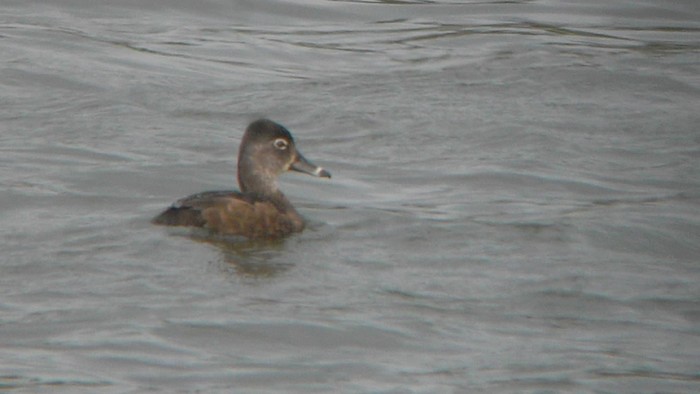
Elsewhere in Angus, a Blue-winged Teal was at Monifieth on 17th ~ which, if accepted, will be the first record of the species for the county, while their ducky run of form continued with a drake Green-winged Teal at Loch of Kinnordy RSPB on 19th ~ one of four seen in Scotland this week ~ the only country to score the species.
The other Green-winged Teals were noted at Daliburgh and then Smerclate, South Uist (Outer Hebrides) on 15th-21st, at Guardbridge (Fife) on 16th and Loch of Hillwell, Mainland (Shetland) on 20th-21st, where it joined a drake American Wigeon found there the previous day. Last week’s first-summer drake at Cuskinny Marsh (Co. Cork) was still present on 18th.
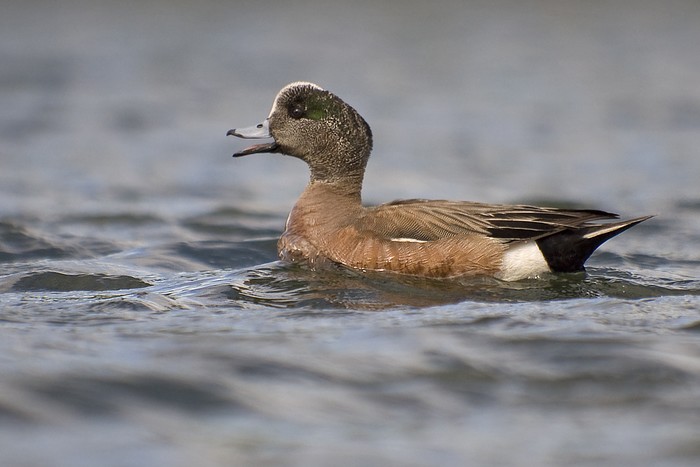
Back in Somerset, at Chew, the drake Ferruginous Duck remained to 15th.
A new first-summer drake King Eider was a great find off Inishkea Island (Co. Mayo) on 17th (one of three super species found there that day, and still there at the end of the week), while the adult drake remained between the Ythan Estuary and Murcar Golf Course in Aberdeenshire all week. A drake Surf Scoter was still off Musselburgh (Lothian) on 16th, while two were reported from Silver Strand (Co. Galway) on 19th (although there was no sign of them a couple of days later).
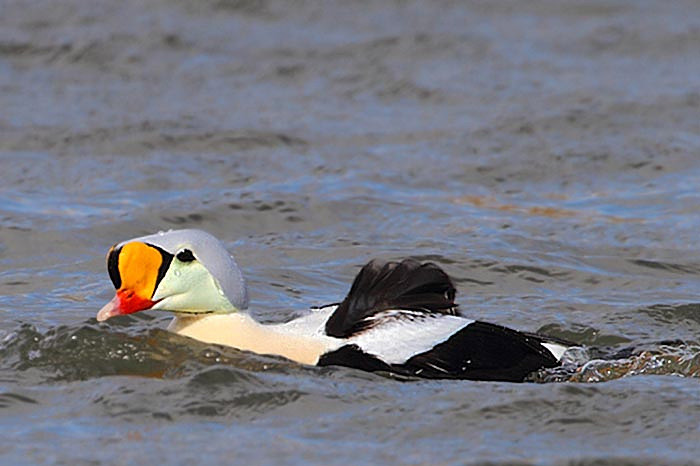
In Norfolk, a Black Brant was seen on the saltings at Warham on 17th, with another remaining at Frampton Marsh RSPB (Lincolnshire) to 20th at least.
The Spurn Peninsula’s first Broad-billed Sandpiper since 2008 was John Grist’s first excellent find of the day on 18th at Patrington Haven (as mentioned earlier, he followed it up, and went better still, with the male Collared Flycatcher). This week’s bird is only the fourth for the Spurn area, and follows single birds at Patrington in October 2003 and at Spurn itself in May 2006 and May 2008.
Cambridgeshire’s male Black-winged Stilt stayed at Wicken Fen NT until 18th while someone’s exciting day out on Inishkea on 17th was bolstered by the finding of an adult American Golden Plover and two Red-necked Phalaropes, while on 21st, a Buff-breasted Sandpiper and four female Phalaropes were found there.
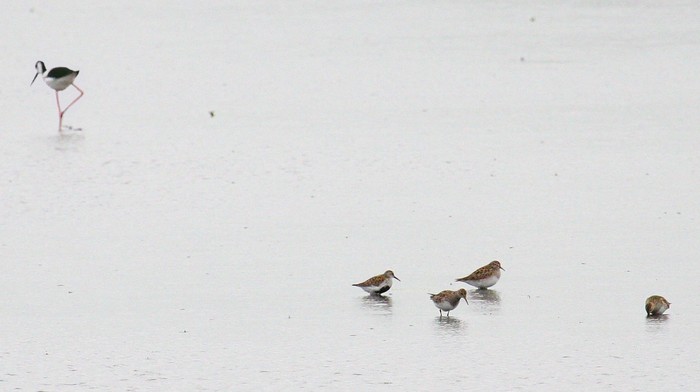
On 16th, a Red-necked Phalarope appeared at Coombe Hill Meadows (Gloucestershire) where it lingered to 21st and Shetland seawatchers, at Wats Ness, saw one fly-by on 21st when two birds were noted on Fetlar.
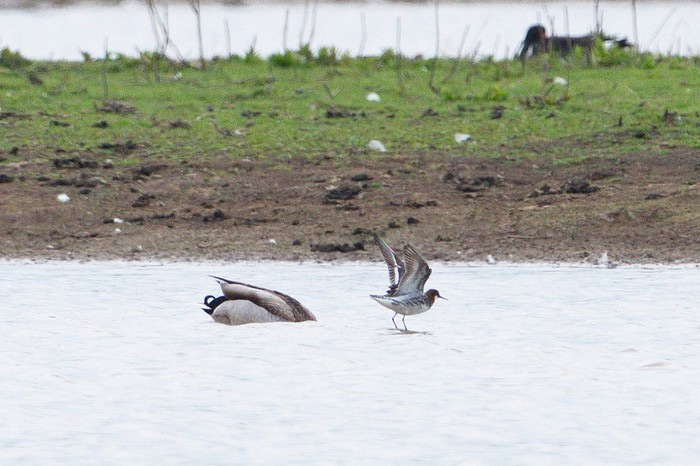
The week began with a brief Pectoral Sandpiper on Skokholm (Pembrokeshire) on 15th and was followed by new birds at Swillington Ings (West Yorkshire) and Saltholme Pools (Cleveland) on 16th and at Ouse Washes RSPB (Cambridgeshire) and Shannon Airport Lagoons (Co. Clare) on 17th and Cley (Norfolk) on 21st.
Last week seemed to be the peak week where Dotterel was concerned ~ 60+ recorded a week ago, while the last seven days mustered just 12 birds, a total that included four birds still at Grainthorpe Haven (Lincolnshire) with two each still for Pendle Hill (Lancashire) and South Uist (Outer Hebrides).
Numbers of Temminck’s Stints did go up a notch or two though ~ peaking with six at Frampton Marsh RSPB (Lincolnshire) by the morning of 19th. Three singles were seen in Suffolk, there were two each for Tophill Low NR (East Yorkshire), Maxey GPs (Cambridgeshire) and Little Marlow (Buckinghamshire) between 16th-18th while inland singles in Surrey, Leicestershire and Staffordshire were also of note. The week’s total of 22 birds was rounded off by birds at Beetley (Norfolk) on 15th, Martin Mere WWT (Lancashire) on 17th and Titchwell RSPB (Norfolk) on 21st.
The first White-winged Black Tern of 2013 was found at Ferry Meadows CP (Cambridgeshire) on 20th, but the 21st record for the county checked out overnight, no sign come dawn the next morning. In Surrey, two Whiskered Terns were reported on the South Basin of Staines Reservoirs on 21st before flying off northeast.
In Devon, the adult Bonaparte’s Gull was still on the Exe Estuary to 15th while two birds were reported in Cornwall ~ a summer adult was at Siblyback Reservoir on 15th-16th and a young bird was reported from Stithians Reservoir on 16th.
On Mainland Shetland, one or two first-year Ring-billed Gulls remained for another week ~ one was again at East Voe of Scalloway on 16th, with presumably the same bird at Loch of Tingwall on 21st, while at the south end of the island, one was still at Loch of Hillwell on 18th. In County Down, the resident third-summer Ring-billed Gull was still at Groomsport on 15th and an adult was on the beach at Maharees (Co. Kerry) on 21st.
Numbers of Iceland Gulls went up a little this week ~ up to 20 recorded, mainly on Scottish islands, with four around the Outer Hebrides and also on Shetland, while three were on Orkney. There were also four birds in Ireland, two each for Kerry and Donegal, while one was seen on Scilly, heading over Deep Point, St. Mary’s on 20th. By contrast, the only Glaucous Gulls this week were seen at Waxham (Norfolk) ~ a bird reported off Kelling and Cley on 15th had been seen passing Sheringham first, where it was seen well by an experienced local birder and confidently identified as a hybrid ~ and also on Lewis (Outer Hebrides), on North Ronaldsay (Orkney) and in Highland, at Dunnet Bay, all on 21st.
/glauc_tmMay2013.jpeg)
The uber-photogenic adult male Red-footed Falcon remained at Lakenheath Fen RSPB (Suffolk) for the week while a female was seen at Assington (also in Suffolk) briefly on 21st. Next door in Norfolk, a male Red-footed Falcon flew over houses in Holt town centre, also on 21st.
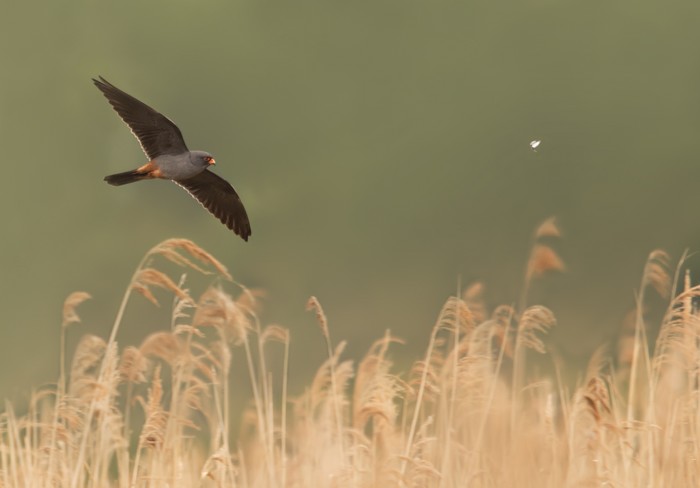
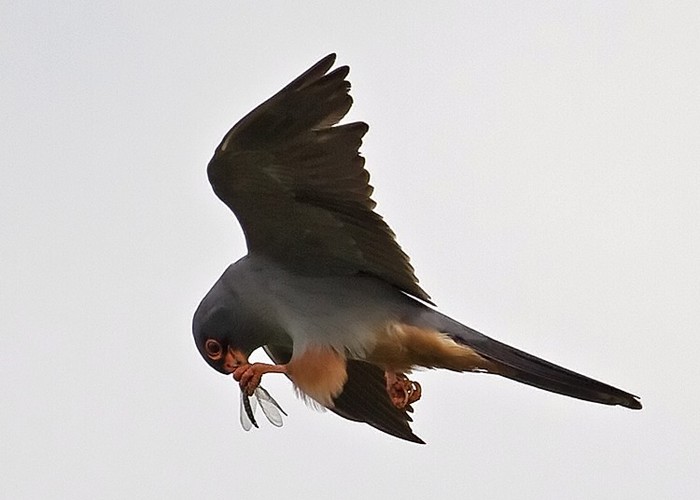
Up to six more Black Kites were reported ~ the week began with the confirmation of one at West Hartford in Northumberland on 15th-16th and this was followed by singles at Mount Caburn (East Sussex), also on 15th, over Abbotsbury and West Bay, Bridport (Dorset) on 17th with one next door in Hampshire, over Ocknell Plain the same day. Further records in the same county came from Mansbridge, Southampton on 18th and the following day over Hamble Common and Pennington Marshes. The final bird of the week was reported over Bromley (London) on 18th.
On the Outer Hebrides, at Greinetobht on North Uist, the adult male Snowy Owl remained to 21st and a single Snowy Owl feather was found on Iniskea on 21st. Nine migrant Montagu’s Harriers included five in Norfolk (including a first-summer at Cley a few hours after the female Pallid ~ a nice double for some!) while 15 passage Honey Buzzards included two drifting over Rutland Water (Leicestershire) on 19th and two singles for Wales, Lancashire and London during the week.
Aside from the obvious, it is pretty tough (once again) to know quite where to start the passerines….Northumberland copped for a whole mass of great birds, but perhaps the runner-up prize in a hotly contested week goes to the singing male Paddyfield Warbler found on North Ronaldsay (Orkney) on 20th.
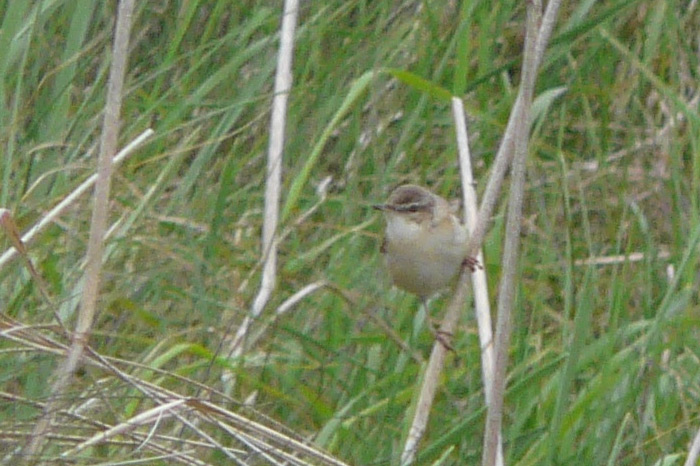
Discovered in the South Gravity area of the island, the bird occasionally sang from the deep cover of a fuchsia bush, but did perform well from time to time, and was still around on 21st. This is the third record of this excellent rarity for the island, but the second within twelve months ~ one was trapped and ringed there on June 9th last year. The first North Ron record came in October 1997, with Orkney’s other three Paddyfields all arriving in 1994 ~ one in midsummer (trapped on Mainland) with two in two October days later that year (on Sanday and then South Ronaldsay).
Not too far behind the Warbler was the fine adult Lesser Grey Shrike that spent two days (19th-20th) on Holy Island (Northumberland) ~ the island and the coast of the whole county seemed to be littered with good birds until the end of the roundup period, more on them as we get through the list! ~ becoming the 10th record for the county and the first since one at Long Nanny in June 2008.
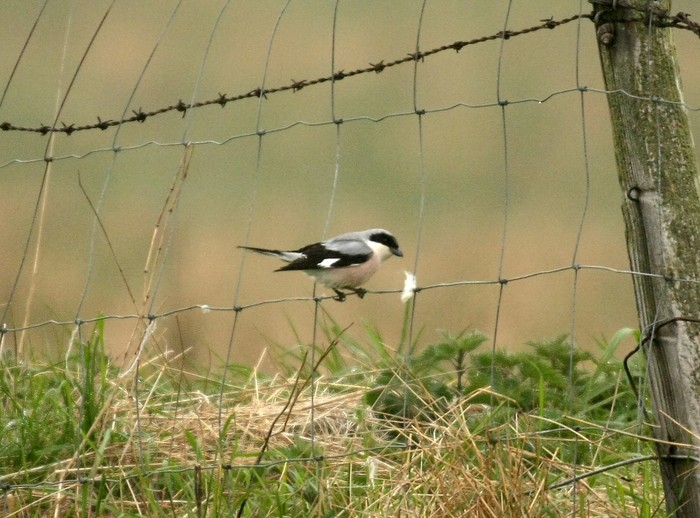
Also on Holy Island on 19th was one of two Rustic Buntings found that day, seen briefly early morning and early afternoon, with the second bird of the day appearing on Fair Isle, at Hill Dyke.
Many of us have enjoyed consecutive ticking trips in the last two springs at the rarity-magnet location of Hartlepool Headland and this week, the popular bowling greens have attracted a lovely, showy Thrush Nightingale. Found on 19th, the bird often performed well to 21st (when it was becoming harder to locate). The previous day, another Thrush Nightingale was seen on Blakeney Point (Norfolk) with a probable the same day at the far west end of the dunes at Burnham Overy.
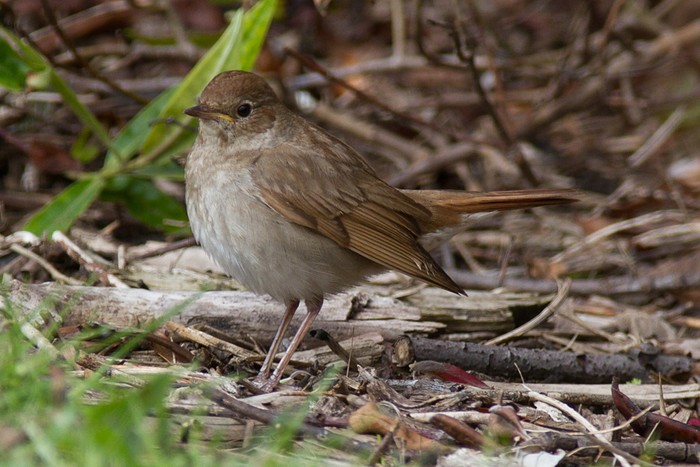
Further fall favourites included a rare spring Barred Warbler, again on Holy Island, from 20th, new Ortolan Buntings were at Spurn and Foula on 17th and Newbiggin-by-the-sea (Northumberland) on 21st, while the bird found last week on Fair Isle remained to 19th and there was also a new one on Foula on 16th.
Fair Isle also produced its 18th Melodious Warbler on 16th ~ only the sixth spring record and the first-ever May record for the island (the previous earliest spring bird was June 6th) and Shetland’s earliest-ever record to boot. Last week’s female Red-breasted Flycatcher remained on Fair Isle to at least 19th while this week saw a further nine appear along the North Sea coast.

First up was one on Norfolk’s Blakeney Point (on 16th) with singles in East Yorkshire, at Flamborough (on 18th) and Spurn (on 19th) following on with further birds on the latter date arriving at South Gare (Cleveland) and St. Fergus (Aberdeenshire). Another newbie on the 19th was found at Ramsgate (Kent) and on 20th a second Red-breasted Flycatcher appeared at Spurn and Lincolnshire’s Gibraltar Point scooped one too. The week concluded with a final RBF at South Shields (Co. Durham) on 21st.
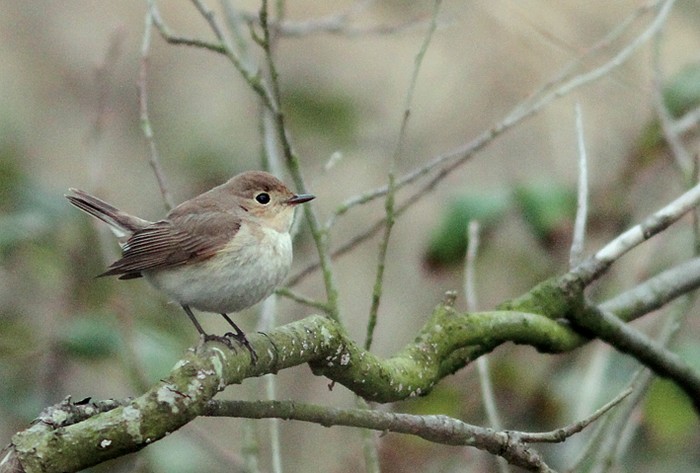
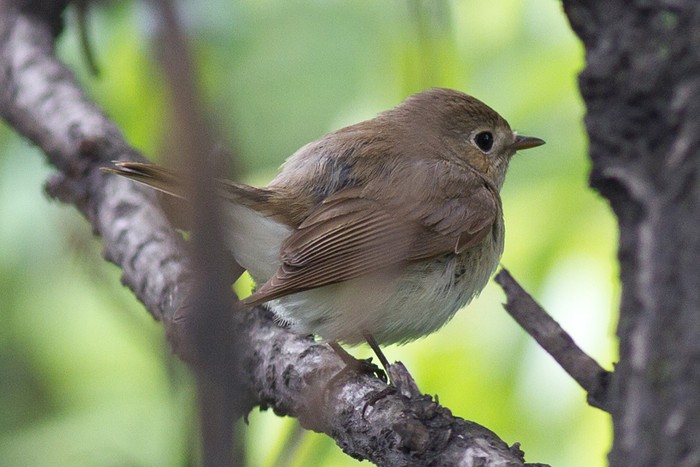
Nine was also the magic number for Icterine Warblers ~ three were seen on Shetland (on Fair Isle on 15th, at Sumburgh on 17th and Scatness on 19th), two singles were on North Ronaldsay (on 15th and 19th) and one was (inevitably) on Holy Island on 19th. Other singles this week were at Holme (Norfolk) on 17th, Cruden Bay (Aberdeenshire) on 19th and a singing male was at Reculver (Kent) on 20th.
Northumberland’s wonderful week continued with a singing male Great Reed Warbler at East Chevington from 19th-21st ~ the eighth county record and the first since June 2009 ~ while half a dozen Marsh Warblers included two on Fair Isle on 18th, two singles on the Spurn Peninsula (at Spurn itself on 16th and at Kilnsea on 19th), one or two on North Ronaldsay (on 18th and 20th) and a singing male at Saltfleet (Lincolnshire) on 19th-20th.
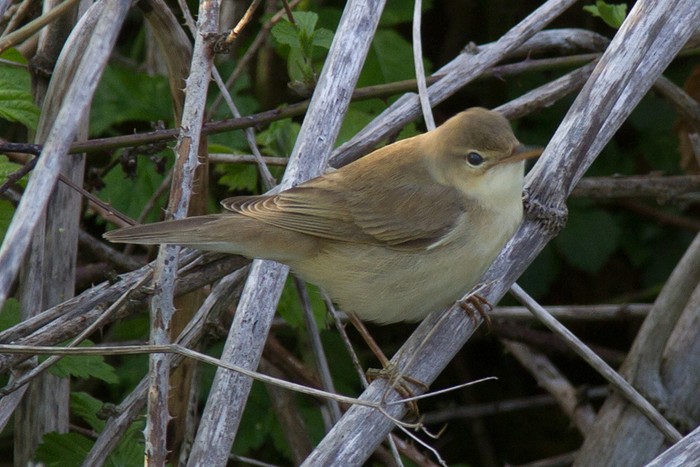
There are two more classic May fall birds ~ Red-spotted Bluethroat and Red-backed Shrike and both made themselves known this week….
Around 10 Red-spotted Bluethroats were noted (a good number for a spring week these days…) with the first, a male, arriving at Marske (Cleveland) on 15th. Two males were found on Fair Isle on 17th, with singles at Dungeness and Flamborough the same day. Two birds were noted on the Farnes on 18th (a male on Brownsman Island, a female on Staple Island) and males appeared at Filey (North Yorkshire) and on Blakeney Point (Norfolk) the same day. On 19th, new males were found in Aberdeenshire (at Sand of Forvie) and on Shetland (over on Whalsay) with two more Shetland birds following on 20th and 21st. A female was at Spurn, also on 21st.
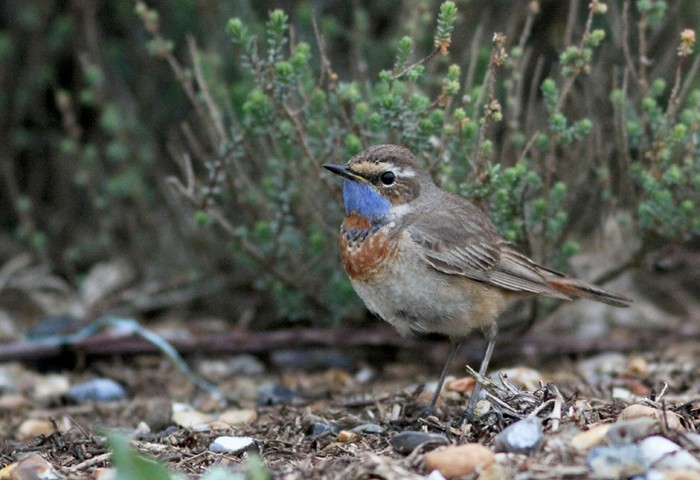
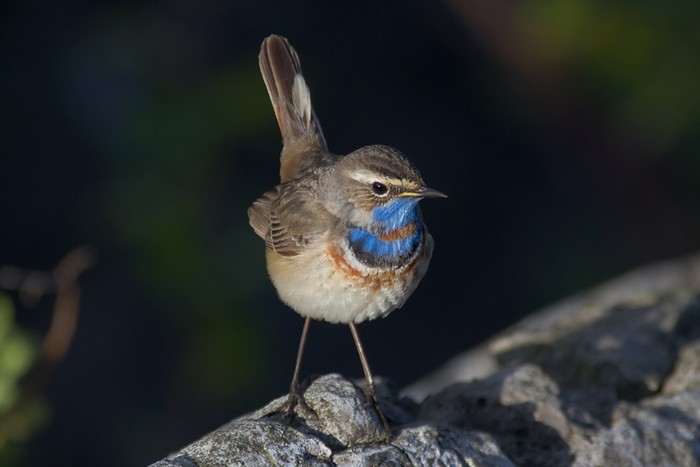
As for Red-backed Shrike, it felt like one of the best showings for years with some 106 birds reported through the week, the vast majority of which appeared between 18th-20th and most of that majority were seen from northeast England to Scotland and assorted islands…
As many as 60 birds were noted in Scotland this week, with some 22 in Shetland alone (including four on Fair Isle on 21st) while 11 were on Orkney and the Isle of May popped in three males on 19th. There were at least three each in Borders and Angus, there were eight in Lothian (including another three for Barns Ness on 20th), seven were found in Aberdeenshire and four were in Fife.
A staggering (in this day and age) 10 Red-backed Shrikes were reported from Holy Island in Northumberland on 20th (they’d certainly been peppered with them on the previous day too) while Whitburn (Co. Durham) scored a minimum five on 19th. Cleveland and East Yorkshire rattled in at least seven each, but the further south you went, the tougher they became to see. Four birds were reported in East Anglia (two for Norfolk, two for Suffolk), two were seen in Kent and one male made it to the Dorset/Hampshire border, at Pentridge, on 17th.
The east coast was awash with Red-backed Shrikes, this fine male was present in Lowestoft, Suffolk (© David Borderick)
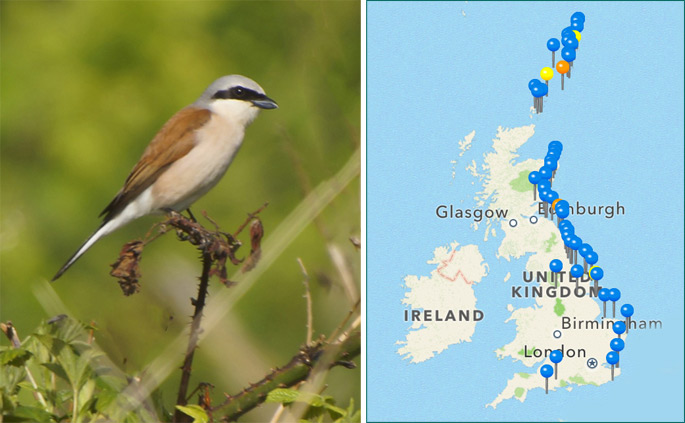
Further trademark birds for the time of year include Common Rosefinch and there were nine of those this week ~ a female on Rhum (Highland) started the proceedings on 17th and was followed on 18th by males on North Ronaldsay and at Skateraw (Lothian) and singles on 19th at Spurn, in Fife, at Balcomie, on Holy Island and Coquet Island (Northumberland) and also at Auchmithie (Angus), the male there to the following two days. Finally on 21st, a female or first-summer male was seen at Kilnsea (East Yorkshire). Half a dozen Wrynecks can also be thrown in to the pot ~ two for Shetland, with one each for Orkney, Aberdeenshire, Fife and Cleveland.
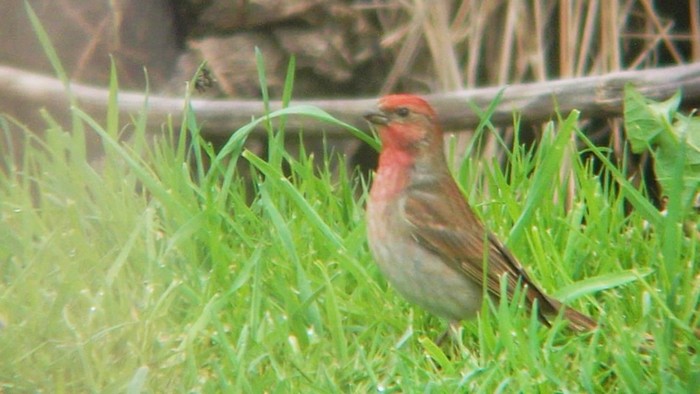
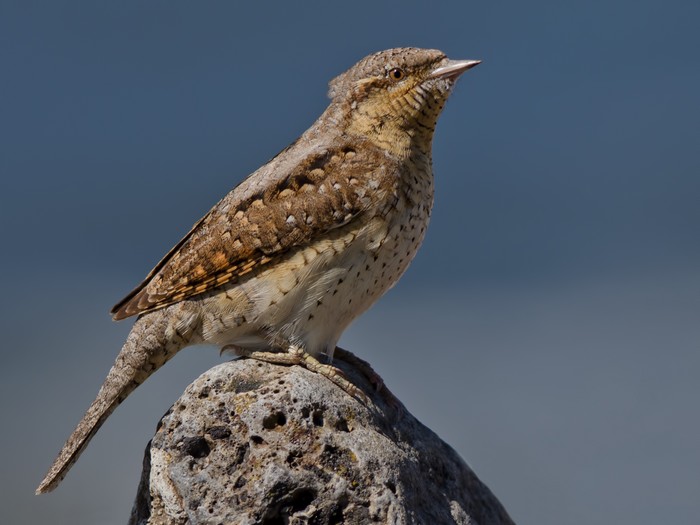

With so many classic fall birds arriving, its over to Andy Stoddart again for a quick summary of those optimum (for some) mid-May conditions…
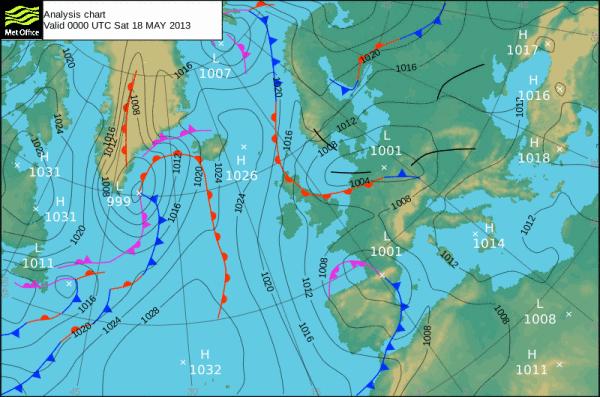
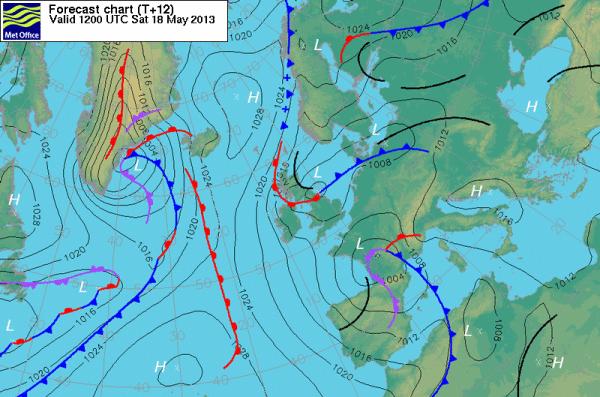
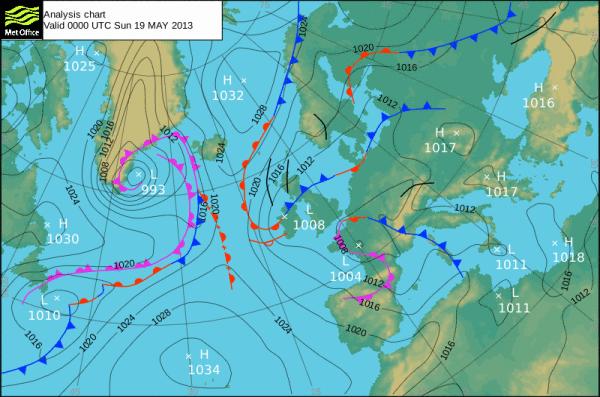
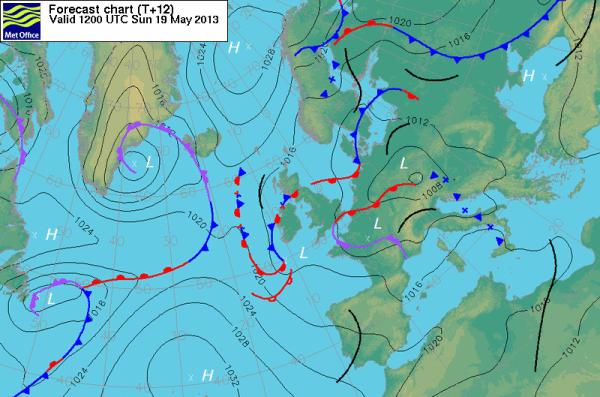
"In contrast to the lack of clues as to just how the Dusky Thrush made it to Kent, it is much easier to understand the conditions which led to the generous spread of rare and scarce birds on northeast coasts on Sunday 19th. The week’s weather had already been somewhat unusual, with multiple low pressure centres moving through and around the North Sea and, unexpectedly, often westwards towards Britain rather than away towards Scandinavia and the Baltic. On Saturday 18th one of these made landfall in northeast England and, predictably, began to deliver birds around its top edge. The Collared Flyctacher at Spurn on Saturday evening was to be the opening act for the much larger arrival on Sunday, one which was helped by a high pressure toppling into Norway overnight and strengthening the existing easterly flow. Sites north of Yorkshire all the way to Shetland (and especially in Northumberland) therefore did well whilst observers south of the Humber found themselves shut out of the action."
Phew…..that’s a lot of birds…..and we’re not finished yet (really? Oh……)
A singing male Iberian Chiffchaff was at St. Buryan (Cornwall) on 16th while last week’s male Subalpine Warbler at Cruden Bay (Aberdeenshire) remained to 16th and duly changed from West to East in terms of its form. In Cumbria, an unassigned male was at Rampside on 15th-18th and a female was on Skokholm (Pembrokeshire) on 16th.
More Mediterranean treats included a nice-looking Woodchat Shrike at Lowestoft (Suffolk) on 19th with another the same day finding a path to Tiree in Argyll, where it remained to 21st. Seven single Bee-eaters were seen from Scilly to Lancashire (one bird taking in Tresco, Bryher and St. Mary’s on 19th-20th) while the only Red-rumped Swallow this week was seen at Stodmarsh NNR (Kent) on 20th. A couple of Alpine Swifts joined the parade too ~ one over the racecourse at Ascot (Berkshire) on 15th with the other appearing at Ruan Lanihorne (Cornwall) on 20th.
Single Hoopoes were found at Gosport (Hampshire) on 17th and another was reported from Mangotsfield (Somerset) the following day. Another was reported in the West Midlands on 16th while last week’s bird at Lyme Regis (Dorset) remained to 15th. A male Golden Oriole was on St. Martin’s (Scilly) on 15th, one was back at Lakenheath on 16th and a singing male was heard briefly at Titchwell RSPB (Norfolk) on 19th with another heading over Kelling Heath and a third east coast bird arriving at Saltfleet on the same day.
In Dorset, a Serin was at Southwell, on Portland, on 15th and was followed by singles in Kent at Dungeness on 17th and 20th and over Bockhill Farm on 19th with another Dorset bird singing at Durlston CP on 21st.
Shetland and the Outer Hebrides had one Short-toed Lark apiece this week with one on Foula on 16th and 18th while Balranald hosted the Hebs bird on 19th-20th. Another was reported in Hampshire, at Pennington, on 19th. In Devon, a Richard’s Pipit was found on Bolt Head on 15th.
Finally (finally ~ hurrah!) there were still half a dozen or so Waxwings this week, with one for Barra (Outer Hebrides), two for Aberdeenshire and three on Shetland, while one in West Yorkshire on 21st could be the last of the season...
Anyway, that’s that. The first truly epic week of 2013 is done and dusted. We’ve had a real, proper full-on mega to play with and, with May’s dates getting deeper in to the 20’s, there’s real hope that there’s at least one more May crippler in the offiing.
There’s been a May 23rd Marmora’s Warbler, a 24th May White-tailed Plover, a May 25th American Kestrel (don’t ask any questions about that…) and ~ for many, one of the ultimate grip-backs for the current generation ~ a May 25th White-throated Needletail ~ the Quendale bird of 1984 appearing on that date….
Another record of the ultra-fantastic species (the same bird presumably) came on May 26th 1991 (seen in Kent, then also in Staffordshire, Derbyshire and Shetland…) and on May 27th 1985, one famously spent a little time over Fairburn Ings in West Yorkshire while, yep, you’ve guessed it, May 28th saw the appearance of the most-twitched (doubtless it really was one-in-the-same for years) White-throated Needletail to date ~ the bird on Hoy, that spent 12 days cavorting at high-speed around the island, dodging the occasional Peregrine attack….and drawing rounds of applause with every overhead pass it made. Happy memories indeed!!!
Y’know, there’s more than just those four species to mention, but when you’ve got to Needletail you kind of grind to halt don’t you. How can you top that? It remains the ultimate British rare for those who’ve scored one and we are approaching the prime arrival time. Sadly, the last sighting came in 1991 ~ and there’s not been a sniff of one in the 22 years that have followed.
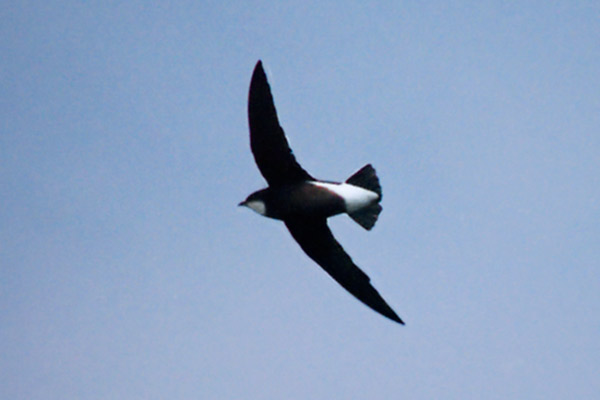
One things for sure, I need a lie down after all that….enjoy the next week. There’s more megas to be had…
Good luck so….
Mark Golley
22 May 2013









